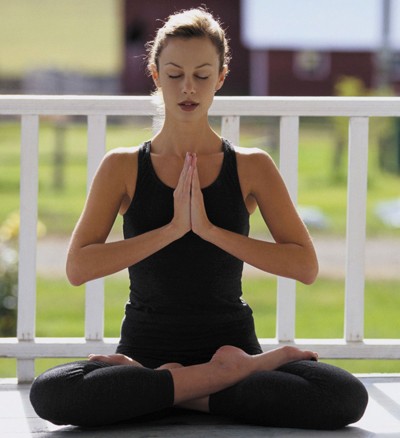
YOGA
What is it? YOGA
Though practised in Asia for some 5000 years, yoga has come to be appreciated by the Western world more recently, as its relaxing and health-enhancing effects have been demonstrated.
From a Sanskrit word meaning ‘Union’, yoga connects mind with breath to control the body and create ultimate physical health and mental peace.
Yoga is also an integral part of Ayurvedic treatment with early morning classes in major ayurvedic retreats.
YOGA – which style suits you ?
The benefits of yoga are numerous and include: good health, happiness, longevity, mental stability, and increase in concentration.
Hatha Yoga – The most familiar kind of yoga practised in the west. It consists of asanas (body postures), pranayamas (breathing exercises), and meditation and provides a balanced approach to the search for perfect physical/mental health and happiness.
YOGA 2
Raja Yoga – Raja, meaning ‘royal’, is considered the highest form of yoga. Meditation is its focal point.
Karma Yoga - The path of service. The principle of karma yoga is that what we experience today is created by our actions in the past. We practise karma yoga whenever we perform our work, live a selfless life, and serve others.
Bhakthi Yoga - The path of devotion, Bhakthi yoga cultivates acceptance and tolerance of others.
Jnana Yoga – The path of transcendental knowledge and wisdom. This can only be achieved through the study of the scriptures and texts of the yogic tradition.
Tantra Yoga – The path of ritual where a respectful attitude is cultivated, encouraging a ritualistic approach to life.
Asthanga Yoga – The eight-step path developed by the father of yoga, Patanjali. This promises to lead the seeker from ignorance to truth. It is an energetic form or yoga, often termed as power yoga. Well known thanks to celebrity fans such as Madonna and Gerri Haliwell, this power yoga involves linking a special breathing technique with a series of progressive postures. This is meant to create intense internal heat and external sweat to detoxify your muscles and organs.
Lyengar Yoga – A popular and widely recognised class, this focuses on precision postures and is slower-moving than some other styles – but intense. It can be easily picked up by beginners.
Ashtanga – Bikram Yoga – The hot-room style. This involves a system of 26 sequenced postures practised in a room heated to 100-110?F. There’s less focus on perfect posture and more on sweating and getting a good workout. It’s one of the more demanding styles and you will need to be reasonably fit to practise it.
Sivananda Yoga – This soul-calming style involves a series of postures, breathing exercises, relaxation and mantra chanting. It’s particularly good for people wanting to touch on the more spiritual or emotionally balancing side of yoga.
The best time to practise yoga is either in the morning or in the evening as long as the stomach is empty. It can be practised by anyone, at any age, with any physical condition, depending on individual needs. For example, athletes and dancers practise yoga for restoring their energy and to improve stamina; women working at home for rejuvenating energy and reducing fatigue, and the elderly to feel strong and improve memory.